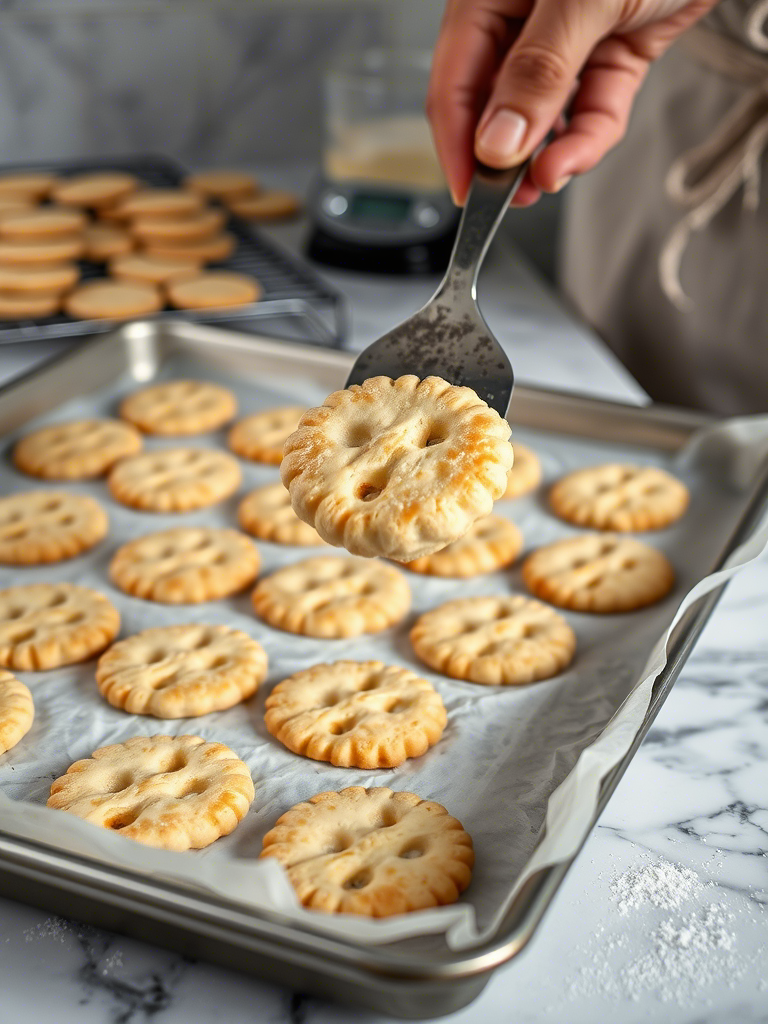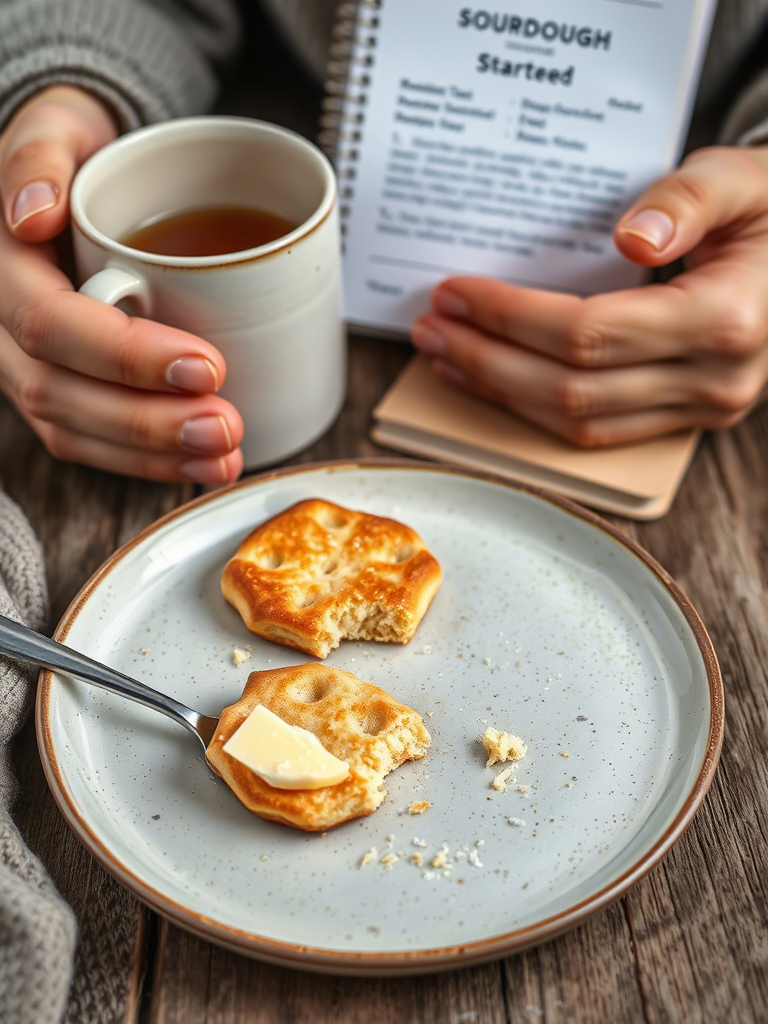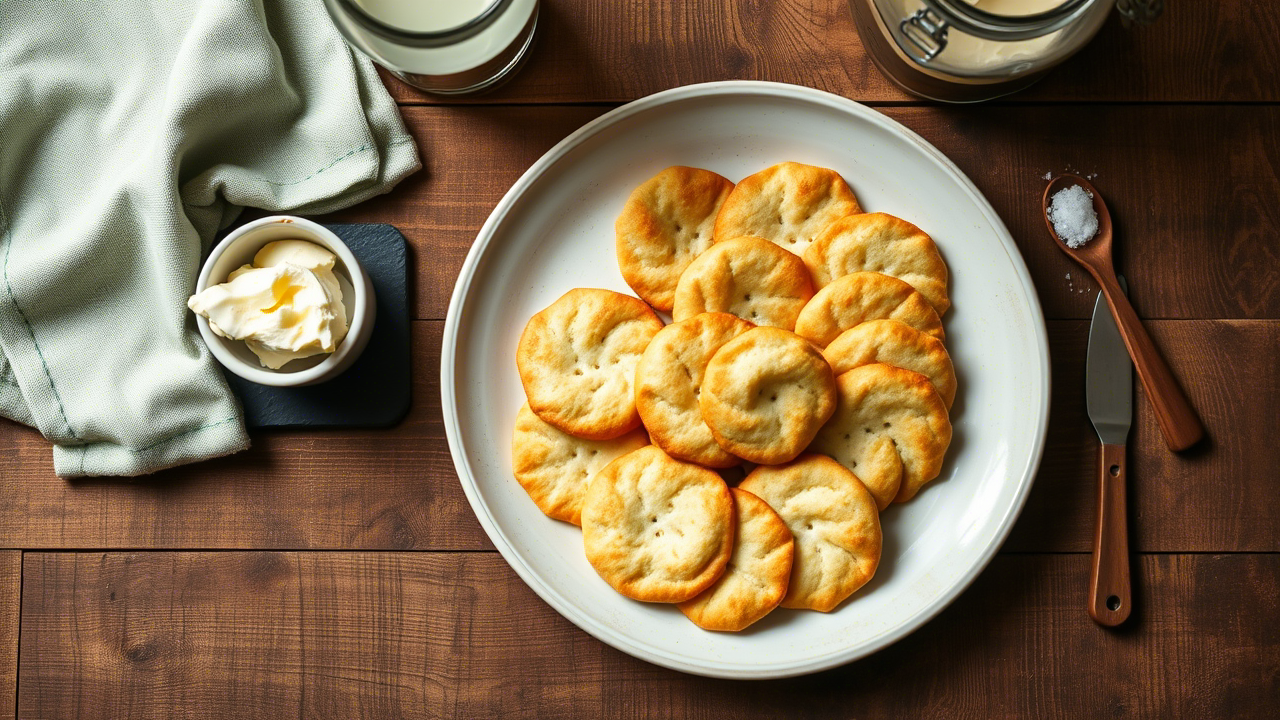You ever bite into something so crisp, so buttery, so deeply satisfying, it stops you mid-thought? That’s what a good sourdough butter cracker does. Not your everyday snack box crunch, no—this is fermentation-meets-fat, science-meets-art, texture-meets-flavor in the tiniest little square. And if you’ve got sourdough discard lying around like most of us bakers do, you’ve been ignoring a goldmine.
This article digs deep into what makes sourdough butter crackers actually special. We’re talking acid development, protein structure, lamination (sorta), flavor layering, and what happens when flour, fat, and fermentation play long games together. This ain’t a blog post with cute photos of a rustic wooden table and grandma’s apron. This is for cooks, chefs, bakers, and culinary experimenters who want to elevate crackers into something so good it earns a place on charcuterie boards, tasting menus, or retail shelves.
Let’s crack it wide open.
Why Crackers? Why Now?
The sourdough boom wasn’t a blip. It stuck. Across pro kitchens and home labs, people are finding new ways to use their starter—or more often, the discard. Crackers make sense. They’re shelf-stable, they’re portable, they’re zero-waste. But more importantly, they’re a blank slate with infinite variables.
You can spike them with herbs, cheese dust, smoked salt, black pepper, even leftover roasted garlic. But even when you keep them plain, sourdough crackers punch above their weight. You’re using acidity and fermentation to build depth that flour and water alone just can’t reach.
The Core Components: Sourdough + Butter = Symphony
Sourdough discard is usually just unfed starter: flour, water, and whatever microbes you’ve been cultivating. Discard might sound disposable, but it’s brimming with wild yeast, lactic acid bacteria, and flavor precursors. You’re throwing away complexity if you toss it.
Butter, on the other hand, adds richness. But not just that—it shortens gluten strands, creates flake layers, and gives you that familiar mouthfeel people chase in puff pastry. And in a cracker? It’s essential. Not optional.
Flour, sure. You need structure. Most recipes go with all-purpose flour, but that’s just the beginning. Sub half with whole wheat or spelt, and you’re bringing in nuttiness and fiber. Go with rye, and you’ll get a tangier, denser bite. But the flour is the canvas, not the painting.
Salt, obviously. Don’t forget it. Undersalted crackers taste like punishment.
Optional but Powerful Add-Ins
Let’s not lie: nobody’s reinventing the wheel by sprinkling in herbs. But when you toast cumin seeds, crush them, and add them into the dough? That’s storytelling. Think smoked paprika, nutritional yeast, lemon zest, za’atar, or even nori flakes for umami. Just don’t go wild without intention. Flavors fight if you don’t give them a leader.
Fermentation: The Unseen Magic
There’s a quiet war happening in sourdough. On one side, wild yeast. On the other, lactic acid bacteria. Both create byproducts that affect the dough: acetic acid (vinegar-like sharpness), lactic acid (mellow tang), ethanol, CO₂, and a hundred tiny things you don’t see.
Let your dough chill overnight, and those microbes keep working. Flavor intensifies. Acidity tightens gluten. The cracker becomes more than crisp—it becomes snappy, with a shattery edge that doesn’t go soft the next day. It’s science and sorcery rolled together.
Real-world case: A bakery in Copenhagen tested 3-hour rest vs 24-hour cold proof. The 3-hour dough was fine. Good even. But the 24-hour version? Customers described it as “cheesy” and “nutty,” even though it had no cheese. That’s fermentation’s flavor mirage at work.

Butter Handling: Cold, Warm, or Browned?
Butter changes depending on how you treat it.
Cold butter (cut into cubes and mixed in) gives pockets of fat, leading to flake. Think shortcrust.
Softened butter makes for a more homogenous dough, almost cookie-like in its behavior. The result’s more even but loses some of that rustic bite.
Brown butter? Now that’s bold. Toasting the milk solids before chilling and folding it into the dough brings roasted, nutty tones. Some bakers swear by it. But it can interfere with gluten formation, so balance it with chilled hands and careful handling.
Quick pro tip? Use your fingertips only. The goal is to avoid melting the butter too early.
The Dough: Not Just Mix and Go
Here’s where many go wrong. They mix the dough and roll it right away. But you gotta chill it. Give it time.
First, let the dough hydrate—at least 30 minutes at room temp. The flour needs to drink in that moisture.
Then wrap and refrigerate. 4 hours minimum, overnight if you can. This rest allows enzymatic action—proteases soften gluten strands while amylases release sugar for a subtle caramel flavor during baking.
Roll it thin. Like, credit card thin. No exceptions. Thick crackers puff weird and don’t crisp properly. A pasta roller on setting 5 works like a dream. Or roll between parchment with a wine bottle. Whatever you’ve got.
Dock the dough. A fork’s fine, or a meat skewer for aesthetics. Otherwise, you get weird bubbles that look cool but bake uneven.
Baking: The Final Stretch
Preheat. Always. 350°F (175°C) is a good middle ground, but if you want serious snap, try 375°F (190°C) for 12-15 minutes. Keep your eyes on ’em after minute 10. Crackers go from pale to scorched in 60 seconds.
Use a heavy baking sheet. Even heat = even bake. Parchment makes life easier, but a silicone mat works too.
Once they’re golden and smelling like toasted heaven, pull them out. Let them cool completely before storing. Otherwise, steam will sog up your hard work.
A tip from restaurant kitchens: throw a silica gel packet into your cracker container. Keeps ’em crisp for days longer. Or toast them again before serving if they’ve gone limp.
Real-Life Use Cases
Let’s say you run a wine bar. These sourdough butter crackers are the perfect vehicle for aged goat cheese, smoked trout rillette, or tapenade.
At a tasting menu? Serve a single cracker with whipped cultured butter and trout roe—an amuse bouche that says “we know what we’re doing.”
At home? Layer on fig jam and blue cheese, or just eat them plain while standing over the sink. No judgment.
One Brooklyn baker started bottling her discard crackers with flavor names like “Everything But The Fridge” and “Tangy AF Cheddar Dust.” Now they’re in five Whole Foods. Real story.
Common Mistakes (Don’t Do These)
- Using fresh starter instead of discard. Fresh starter makes the dough too puffy and hard to manage.
- Skipping the rest time. You’ll get rubbery, underwhelming results.
- Overbaking. Burnt butter is bitter. Watch closely.
- Under-seasoning. Even if you add cheese, don’t skip the salt. Taste your dough raw.
And please, don’t throw out your discard anymore. That’s like tossing out slow-aged wine because it’s not “active.”
Expert Insights and Innovations
Some pastry chefs now dehydrate their discard into powder. Why? To add sourdough flavor into dry mixes like crackers, pasta, or even pancake batter.
One food lab in Portland found that mixing sourdough discard with spent grain from brewing added crazy depth and boosted fiber by 30%.
A startup in Austin’s experimenting with fermented butter in their sourdough crackers. The result? A two-hit fermentation flavor that’s so complex it mimics Parmesan.
Don’t be afraid to tinker. That’s how innovation happens.

Storage & Shelf Life
Store in an airtight container. Room temp is fine. They last about 7-10 days crisp, maybe longer. Want to stretch it? Dehydrate at 200°F (93°C) for 10 minutes on day 5.
And don’t freeze them. Texture suffers.
Final Thoughts: Crackers Deserve Respect
Sourdough butter crackers aren’t filler. They’re a canvas, a flavor bomb, a chef’s secret weapon in disguise. With a little technique and a lotta fermentation, they go from snack to standout.
Next time you scrape your starter jar, don’t toss it. Feed it butter. Bake it. Break it.
And remember—real flavor doesn’t come fast. It comes from time, science, and maybe a little butter.
Actionable Tips for Pros:
- Ferment dough overnight for max flavor complexity.
- Use a pasta roller for precise thinness.
- Try browned butter for a twist—just adjust chilling time.
- Experiment with grains (spelt, rye, barley) to add nuance.
- Store with silica packets for longer shelf life.
- Serve on tasting menus with intentional pairings.
- Build a rotating flavor series to add product line interest.
There’s a whole world in that crunchy little bite. Now go claim it.
FAQs
What makes sourdough butter crackers different from regular crackers?
They use sourdough discard for a tangy depth and butter for rich flakiness that standard crackers lack.
Can I use active sourdough starter instead of discard?
You can, but it may cause the dough to puff too much and affect the cracker texture.
How thin should I roll the dough?
Roll it as thin as a credit card—anything thicker won’t crisp up properly.
Do I have to rest the dough before baking?
Yes, chilling the dough allows the flour to hydrate and deepens the flavor.
What kind of butter works best?
Use unsalted cold butter for flake, or try browned butter for nutty depth—just chill the dough longer.
How long should I bake the crackers?
Bake at 350–375°F for 12–15 minutes, watching closely after minute 10 to avoid burning.
Can I add flavorings or spices?
Absolutely—herbs, seeds, spices, and cheese powders can enhance flavor if added thoughtfully.
How should I store the crackers?
In an airtight container at room temp; add a silica packet to maintain crispness.
How long do sourdough crackers stay fresh?
They’ll stay crisp for about 7–10 days if stored properly.
Can I freeze the baked crackers?
Not recommended—freezing ruins the crisp texture.
What’s the benefit of fermenting the dough overnight?
It boosts the flavor, softens gluten, and creates a more complex, snappy texture.
Is whole wheat or rye flour okay to use?
Yes, they add nutty and earthy notes, just balance them with all-purpose for texture.
Can I use vegan butter or oil instead?
You can, but it changes the texture—expect less flake and more crunch.
Why are my crackers chewy instead of crisp?
They were likely rolled too thick or not baked long enough.
Do I need special tools to make these?
Nope—a rolling pin, fork, and oven are enough, though a pasta roller helps.

Mariana is a passionate home cook who creates delicious, easy-to-follow recipes for busy people. From energizing breakfasts to satisfying dinners and indulgent desserts, her dishes are designed to fuel both your body and hustle.
When she’s not in the kitchen, she’s exploring new flavors and dreaming up her next recipe to share with the Foodie Hustle community.

